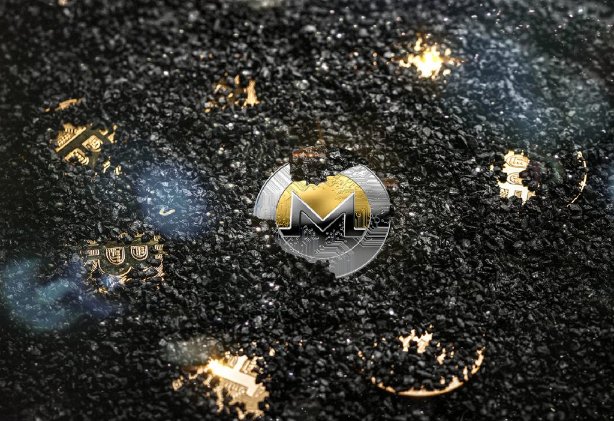
Table of Contents
ToggleWhat is Monero
Monero is a secure, private and untraceable monetary system that uses a special type of cryptography to ensure that all your transactions remain private and 100% untraceable.
As you can read on the website dedicated to this crypto currency:
“Monero is the leading crypto currency with a focus on private and censorship-resistant transactions.
Most of the existing crypto currencies, including Bitcoin and Ethereum, have transparent blockchains, which means that transactions are openly verifiable and traceable by anyone in the world. In addition, the sending and receiving addresses for these transactions can potentially be linked to a person’s real-world identity.
Monero uses cryptography to protect the sending and receiving addresses as well as the transaction amounts”.
So, while Monero is similar to Bitcoin in many ways, it’s different from it in two key ways:
- It’s designed to be totally anonymous and private. As you may have read before, unlike Bitcoin (where wallet balances and transaction information are completely public and traceable), Monero focuses on transaction privacy.
- It uses a very different mining scheme from Bitcoin, which focuses largely on ensuring that people remain able to mine it profitably.
We’ll take a closer look at this last aspect below.
If you want to know more about Monero, we recommend that you read the article on this topic in the Bitnovo Blog
MINING MONERO WHY IS IT DIFFERENT?
In this section we will see what the mechanisms behind Monero are and find out what makes it so special.
If you don’t know, just as there are different types of cryptomoney, there are also different types of mining. This is the case of Monero, whose mining process differs from that of Bitcoin
Monero’s mining is not that different from Bitcoin. Like BTC, Monero uses the Proof-of-Work method.
However, Monero is a very popular crypto currency for those who want to get into the world of mining, mainly for the following reasons:
Anonymity
The most notable difference between Bitcoin and Monero mining is anonymity. Although it’s often said that Bitcoin is anonymous, if we go deeper into the subject, we’ll discover that it’s not exactly that way, since in its blockchain it’s possible to know all the transactions and addresses.
This means that, although we can’t know the person behind that transaction, we can know and control every payment from and to their address.
Monero, however, has always active privacy features applied to its transactions. When someone sends you Monero, you don’t know who sent it to you. And when you send a Monero amount to someone else, the recipient won’t know it was you unless you tell them. Because you don’t know their wallet address, you can’t track their transactions.
Mining
Monero mining does not rely on highly specialized, application-specific integrated circuits (ASICs), but can be run on any CPU or GPU. Without ASICs, it’s almost useless for a normal computer to participate in the Bitcoin mining process. The Monero mining algorithm does not favor ASICs, since it is designed to attract more “small” nodes instead of relying on a few farms and mining pools.
Block boundaries
Another difference in the mining of Monero is represented by the limit of the blocks. Bitcoin’s blockchain has a 1 MB block limit, while Monero’s blocks do not have a size limit. So, Bitcoin transactions will sometimes have to wait longer, especially when the transaction fees are low.
Therefore, we can summarize the advantages of Monero compared to Bitcoin in the following points:
- It’s not traceable;
- You can effectively use “normal” computers for mining;
- It can perform transactions faster.
WHY MINING MONERO
If you are wondering why you should mine Monero and what are its advantages, here are a couple of good reasons to invest in the mining of this crypto currency.
First of all, Monero can be easily exchanged with bitcoin (BTC). Similarly, BTC can be easily sold on the spot, so mining XMR can be a good way to earn money. XMR can also be directly exchanged for fiat money on some of the major crypto platforms.
Furthermore, XMR Mining is based on the CryptoNote algorithm. This means that it uses less electricity than Ethash coins (Ethereum, Ethereum Classic, UBQ) and Equihash coins (Zcash, Zencash, Hush) and should also contribute to longer GPU card life cycles.
Finally, if you buy mining equipment suitable for mining, the mining itself will allow you to generate revenue.
HOW TO CALCULATE THE PROFITABILITY OF MONERO MINING
So, if you have decided to become a Monero miner, you should know why it is convenient to mine Monero.
That’s why, before going into the details of mining Monero, we recommend that you calculate its profitability. You can do it using some platforms dedicated to the calculation of the profitability of mining like: Coinwarz.com, whattomine.com or NiceHash.
Let’s take an example. Let’s browse the whattomine.com website, which provides updated data on the current price, block time and network hash rate (measured in kilohash per second or KH/s, indicating thousands of calculations per second).

Simply enter your card details in the top row and click on your GPU model number.
Then click on CryptoNight (the algorithm on which Monero is based) to have it calculated according to the correct algorithm.
Finally, click on “calculate” and you will see information related to hash and yield.
Requirements for Monero mining
Among the basic requirements for XMR mining are the following
Hardware: we refer to AMD or Nvidia model graphics cards.
Monero Wallet: to keep track of all your earnings.
Reliable Internet Connection: A 24/7 Internet connection is required and at least 15 GB per day per unit.
Power capacity: depending on the wattage consumption of the hardware you choose and the power grid you connect it to.
Choosing Monero mining hardware
As mentioned in the previous paragraphs, one of the benefits of mining Monero is that you can mine XMR with your CPU, so even laptops and desktops can help you earn tokens.
Below is a list of what are considered the best hardware to mine Monero in 2020.
BEST CPU TO MINE MONERO
- AMD EPYC 7742
AMD is considered one of the best providers of high-performance graphics and processing solutions in the market. The EPYC 7742 has a 64-core CPU and a power consumption of 225w. It is a very powerful machine.
Hashrate: 44,000 hours/s
Electrical power: 225w
Processing Thread: 128
Cost: 7,506.59
- AMD Ryzen 5 3600
This mining platform is convenient in case the electricity bills are too high. When combined with a solid memory, AMD Ryzen 5 3600 with 6 CPU cores, it will be a great solution to mine Monero (XMR) cost-effectively.
Hashrate: 7,900 H/s
Electrical power: 65w (default)
Processing Thread: 128
Cost: 185.90
BEST GPU FOR MINING MONERO
- Radeon RX Vega 64 (1700/1100 MHz)
This graphic card will allow you to mine more coins from different algorithms, including RandomX (XMR), Ethash (ETH, ETC), Cuckaroom29(GRIN).
Hashrate: 1,225 H/s
VRAM: 8 GB HBM2 memory
Cost: 531.22
- NVIDIA GTX 1070 Ti (1900/7600 MHz)
While mining Monero with GPUs is not as profitable as mining with CPUs, NVIDIA provides the industry with world-class graphics cards for mining.
GTX 1070 Ti can be used not only for XMR mining, but also enables ETH and ETC mining.
Hashrate: 1,185 H/s
Electric power: 137w
VRAM: 8 GB DDR5
However, if you want to get good results, in terms of profits, we recommend you to use graphic cards (AMD).


